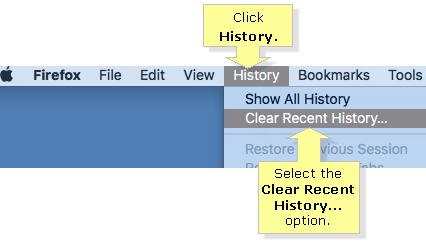Keyboard For Mac Parallels
The USB device question is straightforward too. In the Preferences for Parallels you can specify whether you want USB devices to be auto-connected upon detection or not. Sounds like you have this option turned off. To change it, you need to shut down your virtual machine, if it’s running, and then choose Edit –> Virtual Machine, within which you’ll find one of the options is: On mine you can see that I have my Connection Options set to “Connect to Guest OS”: yours is set to “Connect to Mac OS” instead. A good third alternative, by the way, is to simply choose the option “Ask me what to do”, which means that every time it detects a new USB device, you’ll have the option of letting Parallels have it or let Mac OS X have it.
Improved: Updated trusted.pem root certificates. Fixed: Save Password does not work when authenticating with different domain from NetBIOS. Best email tracking software for mac.
Macs, Parallels and Keyboard Layouts I am currently developing on a Mac, running Visual Studio on a Windows 7 VM courtesy of Parallels. There are a number of issues to resolve the first of which is the key mappings.
All of the modifier keys on a Windows keyboard map 1:1 with the keys on a Mac from a functionality standpoint. For example, the Control (⌃) key does the same thing on a Mac that it does on Windows, the Option (⌥) key on Mac does the same thing as the Alt key on Windows, and the Command (⌘) key on Mac does the same thing as the Windows key. It’s the order not the function The problem isn’t the function of the keys, because as we discussed, from a pure functionality standpoint, the modifier keys (Control, Option, Command) all map 1:1. The problem stems from their arrangement on the keyboard. Modifier key arrangement differences between Mac and Windows: Macintosh: ⌃ ⌥ ⌘ Windows: ⌃ ⌘ ⌥ Such a little thing, the swapping of the Command and Option keys, can cause trouble for someone who’s been typing on a Mac for years.
Fortunately, there is a dead-simple fix for this issue. Video walkthrough How to remap modifier keys in OS X Step 1: Open System Preferences → Keyboard → Modifier Keys. Step 2: Select your third-party Windows keyboard via the Select keyboard drop down box. Step 3: For the Option (⌥) Key setting, select ⌘ Command.
On Screen Keyboard For Mac
Parallels Client, when connected to Parallels Remote Application Server (RAS), provides secure access to business applications, virtual desktops, and data from your device. Using virtualized applications and desktops on Parallels Client is intuitive, fast, and reliable.
 You can also do a manual refresh. Solution 2: Delete Firefox preference files • Click the menu button, click Help and select Troubleshooting Information.
You can also do a manual refresh. Solution 2: Delete Firefox preference files • Click the menu button, click Help and select Troubleshooting Information.
Instead of the friendly ⌃, ⌥, and ⌘ keys, I was presented with Control, Windows, and Alt keys. All of the modifier keys on a Windows keyboard map 1:1 with the keys on a Mac from a functionality standpoint. Firefox for mac 10.6.8 download. For example, the Control (⌃) key does the same thing on a Mac that it does on Windows, the Option (⌥) key on Mac does the same thing as the Alt key on Windows, and the Command (⌘) key on Mac does the same thing as the Windows key. It’s the order not the function The problem isn’t the function of the keys, because as we discussed, from a pure functionality standpoint, the modifier keys (Control, Option, Command) all map 1:1. The problem stems from their arrangement on the keyboard. Modifier key arrangement differences between Mac and Windows: Macintosh: ⌃ ⌥ ⌘ Windows: ⌃ ⌘ ⌥ Such a little thing, the swapping of the Command and Option keys, can cause trouble for someone who’s been typing on a Mac for years.

I've tried all of the key combinations in this weblog with both the A1048 and M7803 and NONE of them work. I even took the M7803 (which is the most PC-like) and tried 3,4, F12, F13, F14 and F15, each alone and then with each and every combination of Control, Alt, Mac-Command (4-Leaf-Clover) and Shift - yes, all 16 combinations - and none of them worked. Then for good measure I tried the Help, Home, Page Up/Down, End, Delete, all three Sound Volume and Eject, both alone and with Control and MacCommand+Control and none of those worked either. Though Claudiu's remap.reg fix did not work either (I did the above test with the A1048 before and after, and the M7803 after his reg update), it's probably just a matter of some tweaking for different keyboard models and keymaps to get it to work. In the meanwhile, I'm using 'On-Screen Keyboard' until I (or someone else like Claudiu) can go and lookup the code/keymap for specific Mac keyboards and how they map to the PC keyboards. Thanks and Mahalos! At least for me, with an IBM Thinkcentre or a Dell Dimension 4600, both running 32 bit Win XP Pro with all the latest updates installed and using any one of the following Mac USB keyboards: Model A1048 (ca 2003), all white 'G4' with Eject, no Power key Model M7803 (ca 2000), black keys on silver 'monochrome G3', w/ Eject M2452 (1998) 'Grape G3' keyboard with Power/no Eject, and no F13 or F14 (or any function key greater than F12 for that matter) What does work: AppleKeys2 - Go to and download Applekeys 2 and use F13 to print screen.